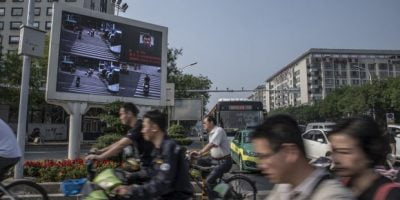
How much does the restaurant experience add to the meal’s cost? And are we actually prepared to pay for it?
OPINION: Will you still visit a fancy restaurant if it offers takeaway food delivered to your door?
I considered this after noticing more celebrity chefs partnering with ride-sharing services, such as UberEats, to deliver their restaurant’s food to a mass market.
Other pricey eateries will surely join them as technology disrupts the restaurant sector and food consumption. Food-ordering apps and the several food delivery services are helping restaurants service a much larger market at lower cost.

More fine-dining restaurant groups have decided home delivery is worth the risk.
Some high-end restaurants are even outsourcing food preparation to third parties in industrial kitchens across capital cities. Effectively, they license intellectual property: brand, menu, recipes and cooking techniques, and let others do the cooking.
READ MORE:
* What’s the new UberEats really like?
* Aucklanders and restaurants embrace UberEats
* UberEats launches food delivery services in Auckland
Virtual restaurant brands are emerging. Well-known chefs could one day lend their celebrity status to an online brand that has no physical storefront. The food might be cooked miles away from the restaurant for which the chef is best known, by another company.
The biggest risks are product cannibalisation and brand dilution.
It’s creative destruction in action: potentially killing off a lower-growth business (a long-established restaurant) and reinvesting funds into a technology-driven restaurant that has higher growth prospects. I hope our leading restaurateurs pull it off.
Risks are huge. Upmarket restaurants that cater for the home-delivery market, using internal kitchen resources, risks damaging their in-store experience. Some restaurants are seemingly taking longer than ever to cook food because more of it is going to couriers for delivery.
Their kitchens were designed for in-store patrons and perhaps a small, local takeaway market. The business is now exposed to a larger customer base area through technology and cannot keep up with takeaway and home-delivery demand without compromising their in-store customer experience.
Quality control is another issue. Consumers will cop the odd soggy pizza that is home delivered. But they are less forgiving when an $80 delivered meal is cold, quality is below that experienced in the restaurant or the menu does not translate well to home delivery.
Upmarket restaurants might have to rethink menu design and even recipes for home delivery, to ensure their brand and food quality is not compromised. Fine-dining meals that are meant to be eaten immediately after preparation in a restaurant will not work if they sit in a delivery box on a courier’s motorcycle for half an hour.
Restaurants that outsource food preparation face other risks. They need to know the industrial kitchen, designed for a high-volume market, can cook their food to the same quality as that made in-store by restaurant-employed chiefs.
Then there is pricing. What sort of discount do consumers expect for fancy food ordered online? At many restaurants, there is not much price difference between food eaten in-store and that ordered online and home delivered, even though the latter is cheaper to produce.
Will consumers pay $30 for a home-delivered meal that normally costs $40 in-store? How much does the restaurant experience add to the meal’s cost?
Pricing strategies are critical for any business that engages in creative destruction. Owners simultaneously need to protect the core business and grow the new venture. For restaurants, it’s about encouraging diners, who may only visit the outlet once or twice a year, to order its home-delivered food more often.
The biggest risks are product cannibalisation and brand dilution. Fewer people may visit their favourite upmarket restaurant if they can order its food online, slash the bill (after deducting wine costs, parking and so on) and enjoy the convenience of eating at home.
Brands might lose favour with their established customer base if the restaurant appears on billboards and TV ads. Exclusivity helps build fine-dining brands. Upmarket companies that target a mass market – think top fashion brands selling clothes in discount department stores – can damage their brand in the long run.
My guess is more fine-dining restaurant groups have decided home delivery is worth the risk. Americans now spend more on takeaway food and eating out than on groceries each week and the same would be true for many inner-city Australians.
The prospect of celebrity chefs and restaurants licensing their intellectual property to third parties and getting a fee for each meal ordered – without the risk of storefront locations, hiring staff and the many challenges of restaurants – must appeal.
Restaurateurs who follow creative-disruption lessons from other industry will know the online market is many times larger and that holding on to legacy businesses, which have low growth prospects, for too long, kills ventures in the long run.
They also know that restaurant brands, menus, recipes and cooking techniques can be scaled and standardised through technology. It’s not exactly the art of fine dining, but selling home-delivered meals to a mass market is tasty business.
[“Source-stuff”]

